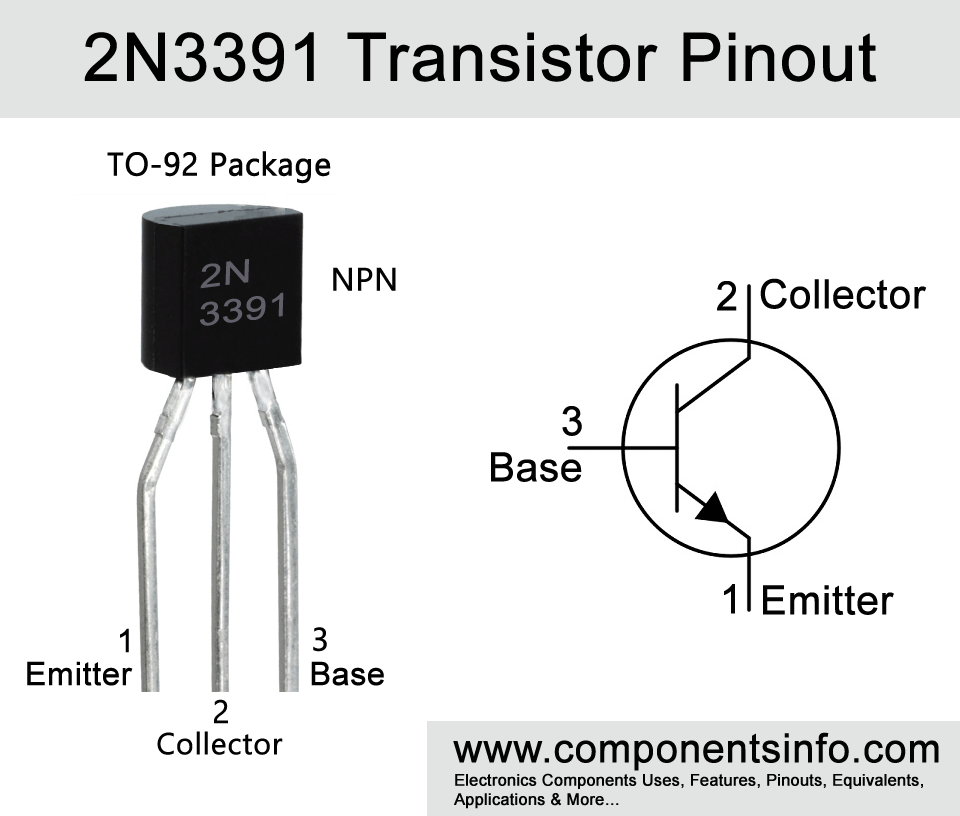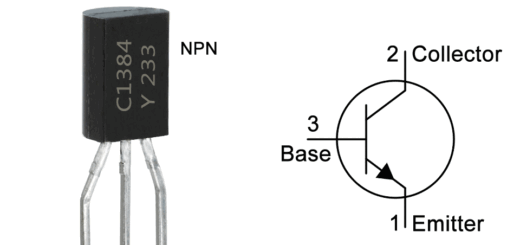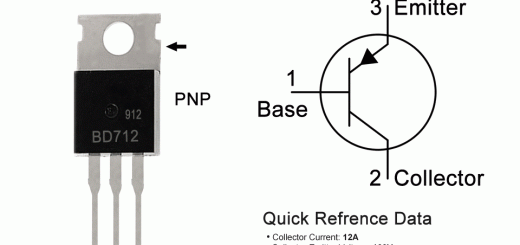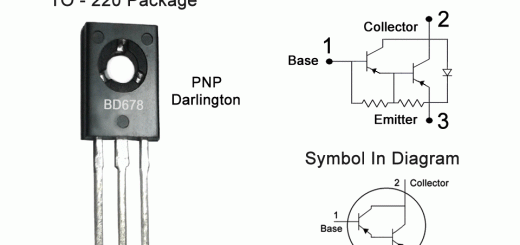2N3391 Transistor Pinout, Equivalent, Applications, Features and Other Useful Info
This post contains 2N3391 transistor pinout, equivalent, applications, features, and other useful information about this general-purpose transistor.
Absolute Maximum Ratings:
- Package Type: TO-92
- Transistor Type: NPN
- Max Collector Current(IC): 500mA
- Max Collector-Emitter Voltage (VCE): 25V
- Max Collector-Base Voltage (VCB): 25V
- Max Emitter-Base Voltage (VEBO): 5V
- Total Device Dissipation (PD): 625 miliWatt
- Minimum & Maximum DC Current Gain (hFE): 250 to 500
- Max Storage & Operating Temperature is: -55 to +150 °C
Replacement and Equivalent:
2SD789, 2SD1835, 2SD1347, 2SC3923, 2SC3921, 2SC3919, 2SC3917, 2SC2500, 2N3417, 2N7053, 2N6539, 2N6008, 2SC1736, 2SC1684, 2SC1645, 2SC1641, 2SC2856, 2SC2854, 2SC2852, 2SC4016, 2SD1578.
2N3391 Transistor Explained / Description:
2N3391 is a general purpose NPN transistor available in TO-92 transistor package. It is the transistor of 2N339X series, the other transistor of this series are 2N3390, 2N3391A, 2N3392 and 2N3393.
Looking at the pin configuration of the transistor the first pin is Emitter second is Collector and third is Base. The transistor has quite good characteristics such as DC current gain of 250 to 500, minimum to maximum output capacitance of 2.0 to 10pF and maximum noise figure is 5.0dB.
Understanding the absolute maximum ratings of the transistor the max collector current is 500mA means that the max limit to which this transistor can drive load is 500mA, the max collector to emitter voltage is 25V means the can drive the maximum load voltage of 25V. The max emitter to base voltage is 5V this voltage shows the maximum limit of the reverse voltage we can provide between emitter and base and the total device dissipation is 625mW, the total device dissipation shows the max limit of the transistor to dissipate power as heat safely.
Where We Can Use it & How to Use:
This transistor can be used for a wide variety of switching and amplification purposes. The using procedure of this transistor is the same as we use any other BJT NPN transistor by connecting its emitter to the ground, its collector to one side of the load, and the other side of the load should be connected to the positive supply of the circuit. The base of the transistor will be connected to the signal you want to amplify or use for switching.
Applications:
Switching
Battery Chargers
Power Supplies
Audio Amplifier
Motor Drivers
Solar Applications
Battery Operated Applications
How to Safely Long Run in a Circuit:
This transistor can be used for wide variety of switching and amplification purposes. The using procedure of this transistor is the same as we use any other BJT NPN transistor by connecting its emitter to the ground, its collector to one side of the load, and the other side of the load should be connected to the positive supply of the circuit. The base of the transistor will be connected to the signal you want to amplify or use for switching.
.
Datasheet:
To download the datasheet just copy and paste the below link in your browser.
https://z3d9b7u8.stackpathcdn.com/pdf-down/2/N/3/2N3391_FairchildSemiconductor.pdf



